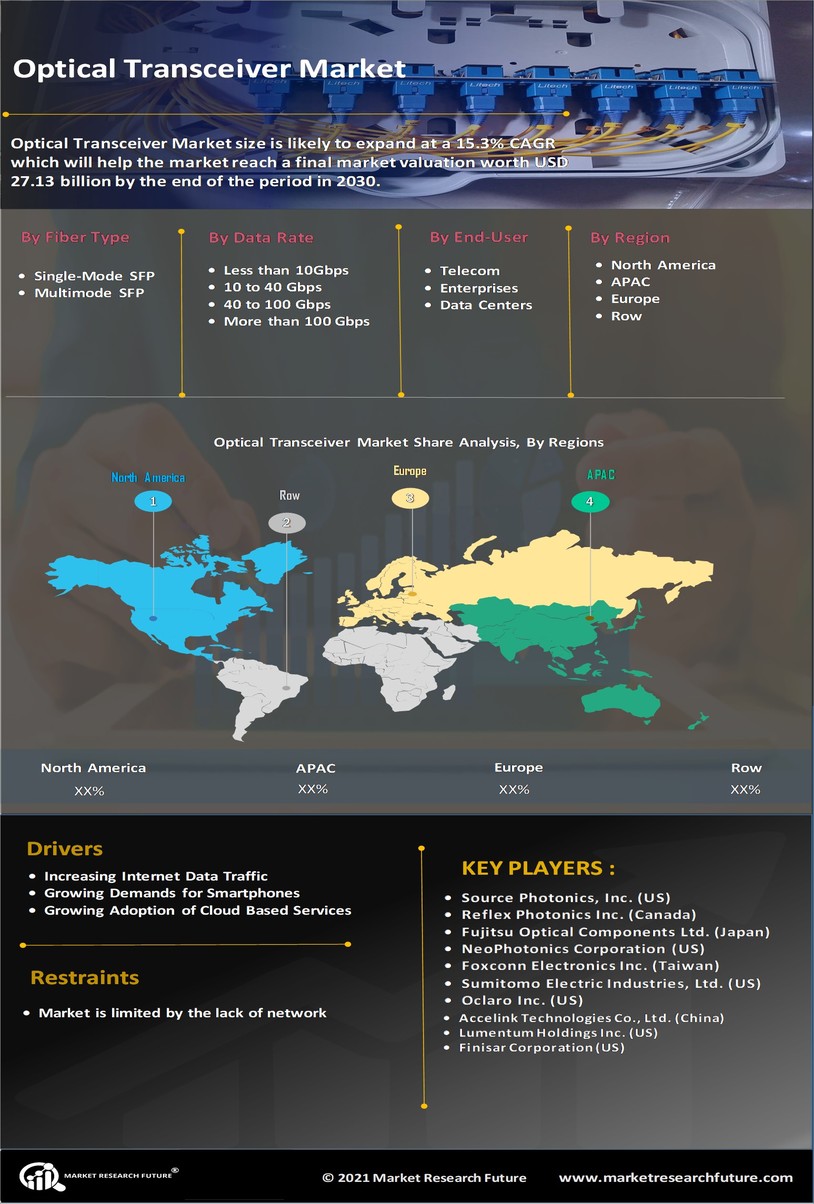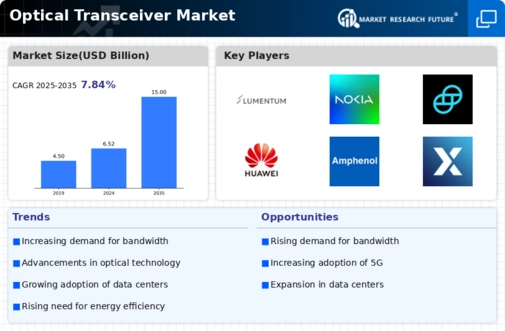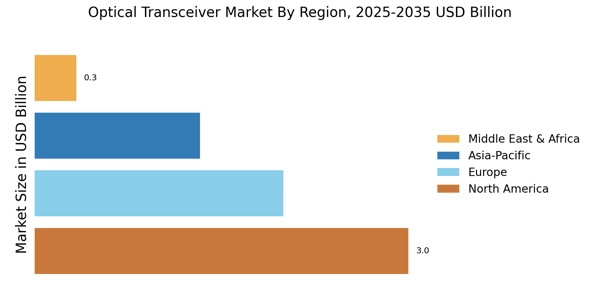Rising Data Traffic
The Optical Transceiver Market is experiencing a notable surge in data traffic, driven by the increasing adoption of cloud computing, streaming services, and the Internet of Things (IoT). As more devices connect to the internet, the demand for high-capacity data transmission escalates. According to recent estimates, data traffic is projected to grow exponentially, necessitating advanced optical transceivers that can handle higher bandwidths. This trend compels network operators to upgrade their infrastructure, thereby propelling the growth of the optical transceiver market. The need for efficient data handling solutions is paramount, as businesses seek to enhance their operational capabilities and meet consumer expectations. Consequently, the rising data traffic serves as a critical driver for the Optical Transceiver Market, influencing both technological advancements and market dynamics.
Emergence of 5G Technology
The emergence of 5G technology is poised to be a transformative driver for the Optical Transceiver Market. As telecommunications companies roll out 5G networks, the need for high-speed, low-latency connections becomes paramount. Optical transceivers are integral to the infrastructure that supports 5G, facilitating the rapid data transfer required for applications such as autonomous vehicles, smart cities, and enhanced mobile broadband. Industry expert's suggest that the deployment of 5G will significantly increase the demand for optical transceivers, as these components are essential for connecting base stations and data centers. The ongoing advancements in 5G technology are likely to create new opportunities within the Optical Transceiver Market, driving innovation and investment in optical solutions.
Increased Adoption of Data Centers
The increased adoption of data centers is a significant driver for the Optical Transceiver Market. As businesses increasingly rely on data centers for their operations, the demand for high-performance optical transceivers has surged. Data centers require robust connectivity solutions to manage vast amounts of data efficiently. The trend towards virtualization and cloud services further amplifies this demand, as organizations seek to optimize their IT infrastructure. Market projections indicate that the data center segment will continue to expand, necessitating advanced optical transceivers that can support high-speed data transmission. This growing reliance on data centers not only drives the demand for optical transceivers but also encourages innovation within the Optical Transceiver Market, as companies strive to meet the evolving needs of their clients.
Expansion of Telecommunications Infrastructure
The expansion of telecommunications infrastructure is a pivotal driver for the Optical Transceiver Market. As nations invest in enhancing their communication networks, the demand for optical transceivers rises correspondingly. This expansion is particularly evident in developing regions, where governments and private entities are striving to improve connectivity. The deployment of fiber optic networks is becoming increasingly prevalent, as these systems offer superior speed and reliability compared to traditional copper lines. Market data indicates that the telecommunications sector is expected to witness substantial growth, with optical transceivers playing a crucial role in facilitating this expansion. The ongoing investments in infrastructure development are likely to create a robust demand for optical transceivers, thereby shaping the future landscape of the Optical Transceiver Market.
Technological Advancements in Optical Components
Technological advancements in optical components are significantly influencing the Optical Transceiver Market. Innovations such as silicon photonics and advanced modulation techniques are enhancing the performance and efficiency of optical transceivers. These advancements enable higher data rates and improved signal integrity, which are essential for meeting the demands of modern communication networks. Market analysis suggests that the introduction of next-generation optical transceivers, capable of supporting speeds exceeding 400 Gbps, is likely to reshape the competitive landscape. As technology continues to evolve, manufacturers are compelled to invest in research and development to stay ahead. This relentless pursuit of innovation is a key driver for the Optical Transceiver Market, fostering a cycle of continuous improvement and adaptation.

















Leave a Comment